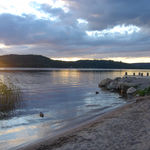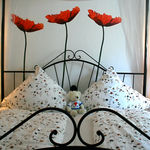Osteopathie
Osteopathy is more than just a form of therapy!
Only a handful of hotels in Austria can offer their guests high-class osteopathic treatments. We are proud to be able to offer you this great opportunity. Take advantage of it, you won't regret it!
Osteopathy is a very holistic way of looking at and treating the human body. It is as individual as every single cell in an organism. It is as gentle as the movement of a wave and spreads throughout the entire body, like a stone falling into the water and making its circles to the last corners. Gentle touch with maximum effect.
What is Osteopathie?
Osteopathy is a holistic medical method and is at home in the field of complementary medicine. Osteopathy was developed in the USA in the mid-19th century by Dr Andrew Taylor Still (1828-1917). He was looking for ways to treat illnesses successfully without medicine or surgery and recognised that restrictions in the movement of body structures and fluids disrupt the function of the body and ultimately lead to illness.
The osteopath strives to find disturbing body blockages and to dissolve them with manual techniques so that the life energies can flow again and the body can become healthy again. Osteopathy is a holistic form of therapy that is used as a manual therapy method (such as Maitland, Kaltenborn, Cyriax,...) within the framework of physiotherapy or medical treatment. Through a detailed anamnesis (medical history), the examination of the body's functions and the feeling of tension in various tissues with the hands, a diagnosis is made.
The therapy is based on the most important principles of Osteopathie:
The body's capacity for self-healing and self-regulation, the functioning of the human body as a unit, the interplay of function and structure as well as the unconditional blood circulation and supply of the tissues. This holistic concept is characterised by access to all systems of the human body. At least three subdivisions are made.
1. the structural system includes the entire musculoskeletal system such as muscles, spine, joints, tendons and ligaments.
2. the visceral system covers the internal organs, their suspensions from the musculoskeletal system, their sheaths and their nerves and blood supply.
3. the craniosacral system stands for the movement of the cerebrospinal fluid, the nerves system, its sheaths - the meninges - and their attachment to the skull (cranium) and the sacrum (sacrum). The free movement of all structures around their physiological (correct, healthy) axes enables the recovery of health.
Bianca & Mathäus Ellinger 0650 331 2221 / info@alpmed.at

